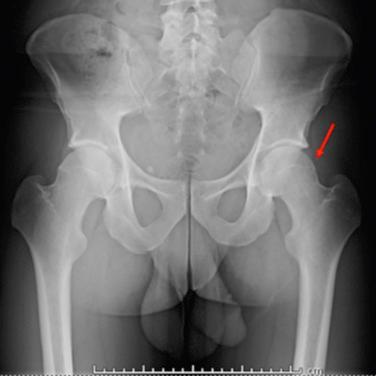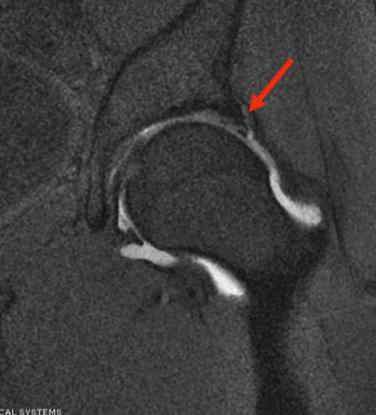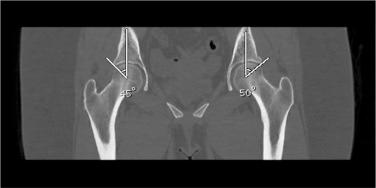Physical Address
304 North Cardinal St.
Dorchester Center, MA 02124
Cam morphology leading to femoroacetabular impingement syndrome (FAI) may develop through both primary (idiopathic) and secondary mechanisms.
Evidence suggests that primary cam deformities may be a product of physeal overload or trauma during skeletal growth, likely around the time of growth plate closure.
Sex, genetics, race, and high-intensity sport participation are risk factors for primary cam development.
Recognized secondary causes of cam abnormalities are slipped capital femoral epiphysis, Legg-Calvé-Perthes disease, and deformity after femoral neck fractures.
Excellent outcomes are possible in the operative management of children and adolescents with cam-type FAI.
The utility of prophylactic resection of cam deformities in asymptomatic patients for prevention of FAI in high-risk individuals is not warranted based on currently available evidence.
Femoroacetabular impingement syndrome (FAI) is a clinical diagnosis resulting from abnormal hip joint morphology that has become increasingly recognized as a common cause of hip and groin pain in adolescents and active young adults. Most recently described by Ganz et al. in 2003, FAI has been posited as a precursor to hip osteoarthritis (OA); however, conflicting evidence exists about the natural history of FAI and the true progression of the disease remains unclear. In fact, many patients are asymptomatic despite the presence of osseous abnormalities confirmed by imaging. Hip joint pathomechanics leading to FAI are complex; but, regardless of etiology, this entity is characterized by osseous deformity found at the femoral head-neck junction (cam-type) and/or acetabular rim (pincer-type). These deformities induce labral and chondral damage, causing pain and restricted range of motion (ROM).
Both cam- and pincer-type impingement can lead to the development of symptomatic FAI but occur through different mechanisms. The origin of cam morphology has been the subject of increased interest among hip surgeons in association with the increasing popularity of hip arthroscopy over the past 2 decades. An evolving understanding of the disease origin suggests that cam lesions may develop during skeletal maturation due to a combination of genetic and environmental factors or it may be the sequelae of pediatric hip disease. Bony remodeling before and during physeal closure appears to play a significant role in developing the osseous deformities that are the hallmark of FAI. Despite significant progress, a complete understanding of the origin of primary cam morphology remains elusive.
This chapter describes the current perspective on the development of cam-type impingement deformities during adolescence and reviews the etiology, diagnosis, and management strategies for this difficult problem.
In 2003, Ganz et al. were the first to describe FAI and its associated cam-type deformity and correlation with specific articular damage. These lesions represent a relative decrease in femoral head-neck offset, either focally or globally, due to an osseous prominence at the head-neck junction. Cam lesions may occur as an isolated finding or in combination with acetabular overcoverage (pincer-type deformity). The exact etiology of both cam- and pincer-type impingement remains unresolved, but recent evidence suggests that osseous changes begin during skeletal immaturity while the physes are still open. It is thought that growth plate disturbance, whether by underlying disease mechanisms or by repetitive activity and abnormal loading, contribute to cam development.
Cam-type FAI is a result of femoral asphericity. This is seen as a flattening of the anterior contour of the head-neck junction, or an osseous convexity leading to loss of normal offset at the femoral head-neck junction. This so-called pistol grip deformity is often located on the anterolateral or anterosuperior portion of the head-neck junction and can be easily identified on radiographs ( Fig. 42.1 ). The lesion can cause damage to the acetabular cartilage through shear stress generated during hip flexion when the deformity contacts the anterosuperior region of the acetabulum. This results in cartilage delamination and secondary tearing of the labrum at the chondrolabral junction, resulting in pain and impaired hip function ( Fig. 42.2 ).


Pincer-type impingement results from acetabular overcoverage ( Fig. 42.3 ), resulting in a different pathomechanical process leading to FAI. This overcoverage can come from focal labral hypertrophy, acetabular retroversion, or globally increased coverage from osseous abnormalities such as deep socket or protrusio acetabuli. In comparison with cam-type impingement, pincer lesions damage the labrum first as the hip flexes due to the compression of the anterior labrum against the femoral neck . Over time, repetitive labral microtrauma leads to gross tearing of the labrum and separation from the articular cartilage. Additionally, acetabular cartilage damage can occur through a “contrecoup” mechanism from persistent pressure between the posteroinferior acetabulum and the posteromedial aspect of the femoral head.

Pincer-type FAI alone is uncommon; most patients also have a concomitant cam lesion for so-called mixed cam/pincer FAI. One large study of patients with symptomatic FAI reported that 47.6% of hips had a diagnosis of cam FAI, 44.5% had combined cam/pincer FAI, and only 7.9% had pincer FAI alone.
Although the secondary causes of cam morphology are well described as sequelae of pediatric hip disease, the majority of patients with symptomatic FAI have cam deformities that are believed to be idiopathic. The natural development of these abnormalities is an area of active research, with recent studies identifying both intrinsic and extrinsic risk factors.
Some differences in hip morphology may be secondary to sex-specific differences, ultimately influencing variation in ROM to impingement between males and females. Femoral head-neck offset, acetabular version, proximal femoral version, femoral neck-shaft angle, and lateral center edge angle have all been postulated to contribute to morphologic differences in the hips of male and female patients.
Previous studies have identified that female patients with hip pain and labral pathology have increased anterior head-neck offset (lower alpha angles) than male patients. Several reasons have been postulated for this finding. The increased peak hip flexion and greater frontal plane motion observed in female athletes during drop landings likely results in abutment of smaller cam lesions against the acetabular rim, causing hip pain. Another explanation for lower alpha angles in symptomatic females could be related to the more anterior location of their cam lesions. Because the alpha angle is measured on the oblique axial cut through the center of the femoral neck, it corresponds to the cam lesion only if the lesion is located on the anterior femoral neck. Traditionally, anterior cam deformity associated with hip symptoms and labral tears was described as an alpha angle of greater than 50 to 55 degrees. However, if head-neck offset is decreased secondary to a subtle cam lesion at a more superolateral area of the femoral head-neck junction, the oblique axial cut could miss the area of loss of head sphericity, resulting in an alpha angle that could be smaller than 50 degrees despite the superolateral cam lesion being clinically relevant and causing impingement.
In addition, symptomatic female patients have increased acetabular version. Acetabulae from the general asymptomatic population have shown similar trends. Femoral neck version shows similar trends, with both symptomatic and asymptomatic females demonstrating increased femoral neck anteversion compared with males in most studies. Other studies have failed to demonstrate this difference. What is clear is that a majority of increased hip version seen in female patients is a result of increased acetabular anteversion, with minor contributions from the proximal femur.
The lateral center edge angle (LCEA) of Wiberg has also been discussed as potentially differing between male and female patients, indicating differing lateral coverage of the acetabulum. However, these findings have been inconsistent and have been confounded by selection bias. Studies of symptomatic patients undergoing hip arthroscopy have excluded patients with known hip dysplasia, though in those patients they have found no difference in LCEA between male and female patients.
An examination of native hip morphology suggests that several radiographically identifiable factors may put individuals at risk for developing cam deformities. These include decreased femoral-acetabular anteversion and decreased pelvic incidence (PI). Previous studies have shown that relative femoral and acetabular retroversion results in early impingement through both the flexion-extension and internal-external ROM arcs. The spinopelvic relationship, as represented by PI, is a position-independent parameter that describes sagittal balance and spinopelvic alignment. Patients with a lower native PI may achieve sagittal balance by compensating with increased anterior pelvic tilt, leading to relative acetabular overcoverage and early impingement.
Become a Clinical Tree membership for Full access and enjoy Unlimited articles
If you are a member. Log in here